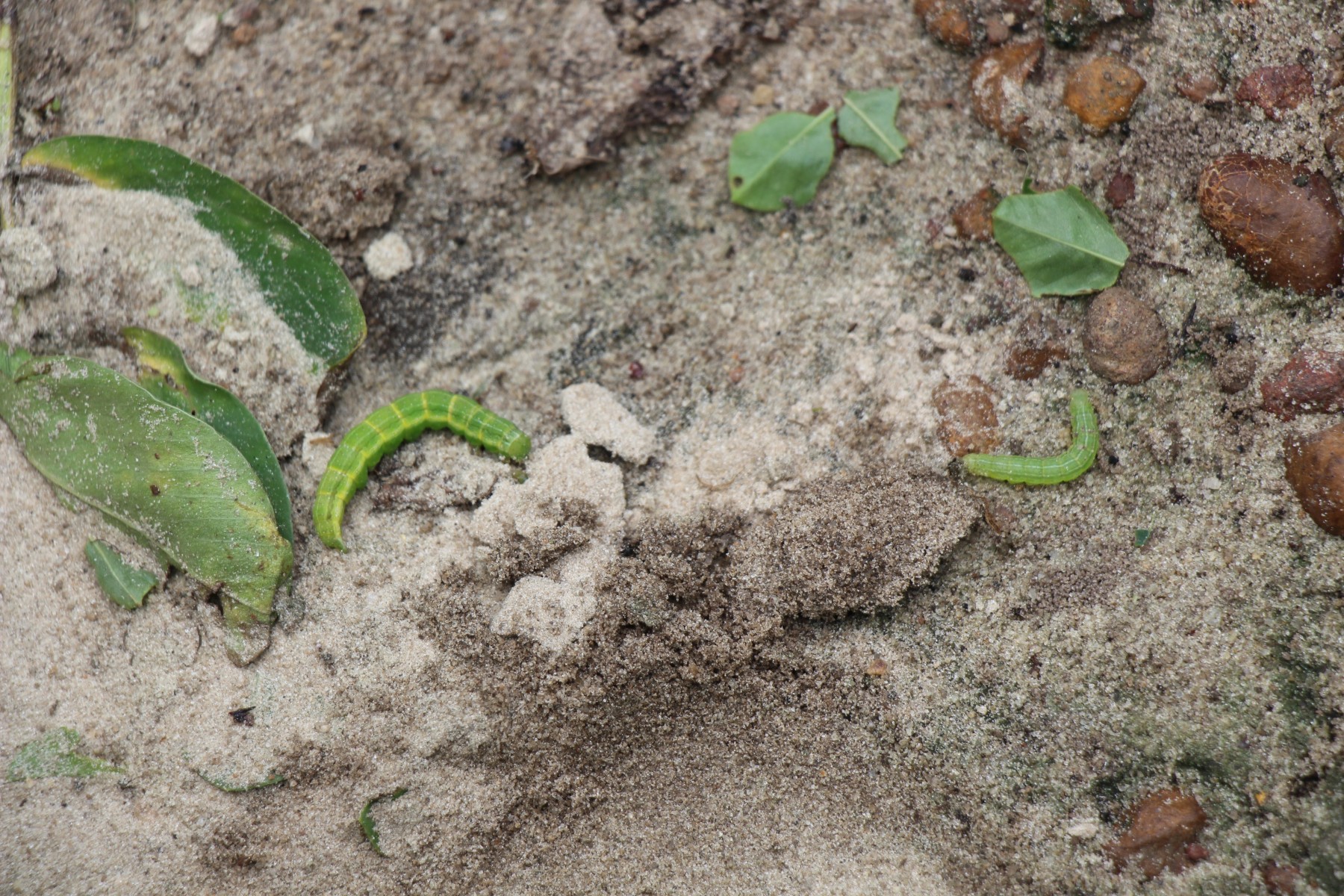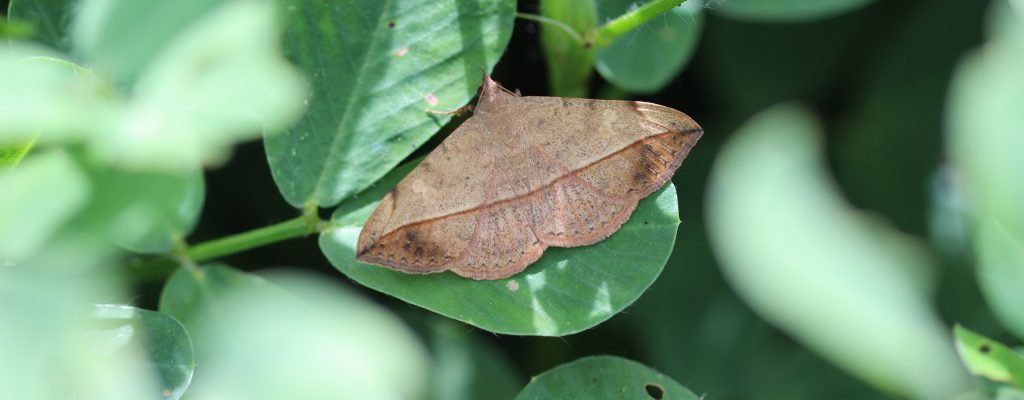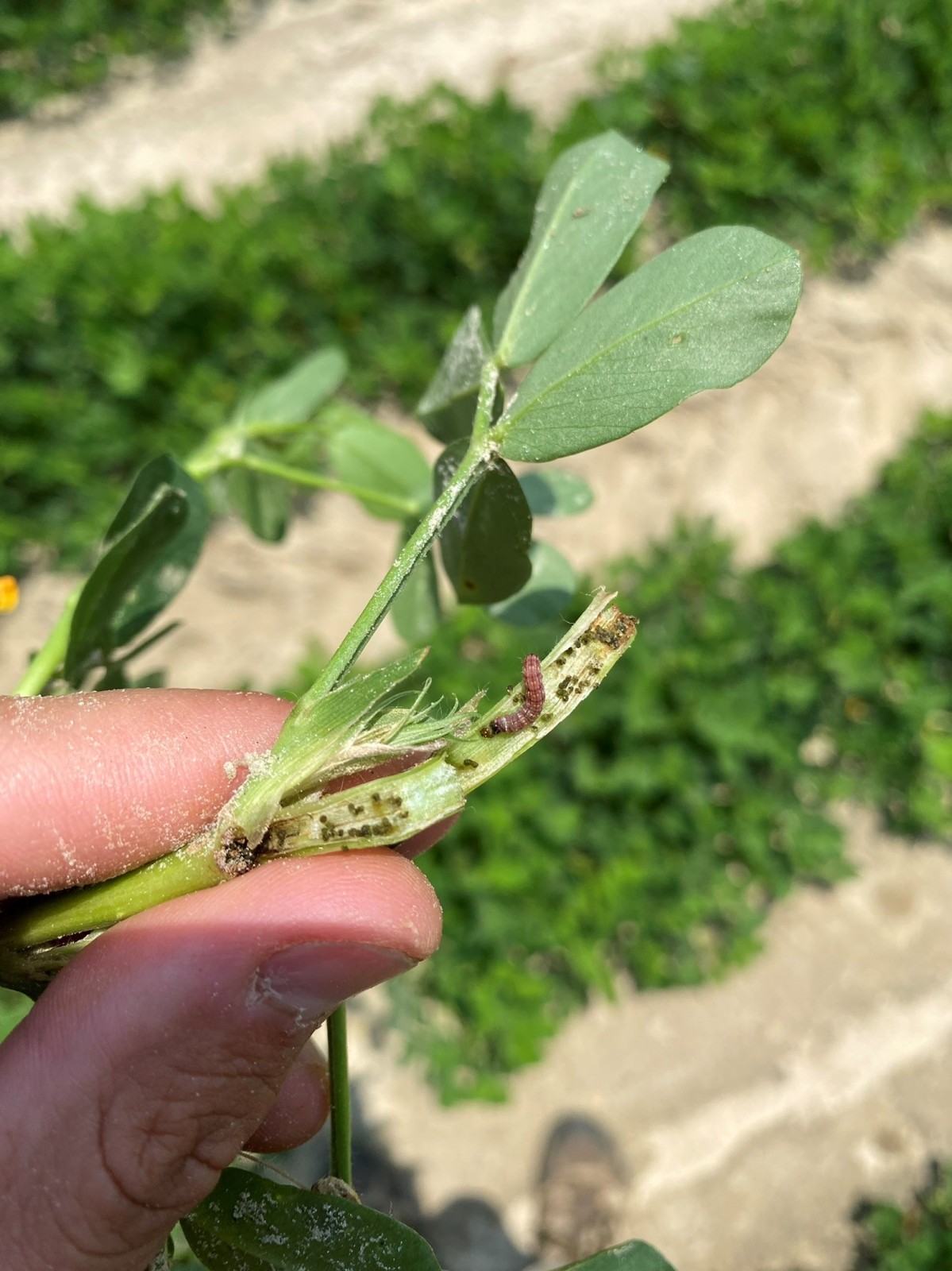Caterpillars
-

After thrips, foliage feeding caterpillars are the most often treated insect pest in Georgia peanut fields. While it is certainly not uncommon for caterpillar infestations to reach the economic threshold (the threshold ranges from 4 to 8 caterpillars per row foot depending on crop condition), not every peanut field in the state will need to…
-

Among the items on a long list of things that will need attention after this week’s storm has passed is scouting peanut fields for insect pests. We are already experiencing higher than “normal” caterpillar pressure this year, and we are now entering the portion of the season when velvetbean caterpillar and soybean looper typically show…
-

Many peanut fields in Georgia received much needed rain over the past two weeks. This does not mean that lesser cornstalk borers (LCB) will be gone from those fields. Rain DOES NOT kill LCBs. Cool moist conditions are not favorable for the pest, but in situations where populations are already high, sporadic rainfall will have…
-

The recent advent of hotter and drier weather has brought with it the first reports of lesser cornstalk borers (LCB) in Georgia peanut fields. I have also gotten a number of calls and texts over the last 10 days about foliage feeding caterpillars at or near threshold. I have not personally identified any of the…
-

Velvetbean caterpillars (VBC) have become abundant in Georgia peanut fields over the last 10 days. Growers that do not have a scout or consultant should check their fields for infestations TODAY. Over the course of the last week I have seen fields stripped to bare stems and have heard of caterpillar counts up to 15…
-

The July rain in South Georgia will reduce the severity of lesser cornstalk borer infestations in many fields and will at least buy us some time before spider mites become a serious concern. If the rain continues through the remainder of the season, we will likely not have to battle either of these pests over…
-
June will bring a shift in insect concerns in peanut, and as usual, the weather will play a large role in determining what happens next. April and May insect questions were primarily about thrips, so I will give a short summary of the 2020 thrips situation. Thrips pressure in my trials was variable with some…
-
It came as no surprise on Monday morning when the phone starting ringing with questions about foliage feeding caterpillars, lesser cornstalk borers and two spotted spider mites in peanut fields. Most of the foliage feeding caterpillars we are seeing now are velvetbean caterpillars (VBC). This species is generally easy to kill with insecticides, but left…
-
Velvetbean caterpillars (VBC) have arrived in large numbers in some Georgia peanut fields over the past couple weeks. Peanuts that are 70 to 90 days after planting are likely to be at greatest risk for yield loss from defoliation; the risk is even greater in fields that are drought stressed. VBCs have voracious appetites and…
-
It is always something…this week in the world of peanut entomology that something is cutworms. We see cutworm injury to peanut foliage every year in the month of June, and in most cases these infestations are nothing more than curiosities. This year scouts, agents, and growers are finding and reporting much higher than usual populations…